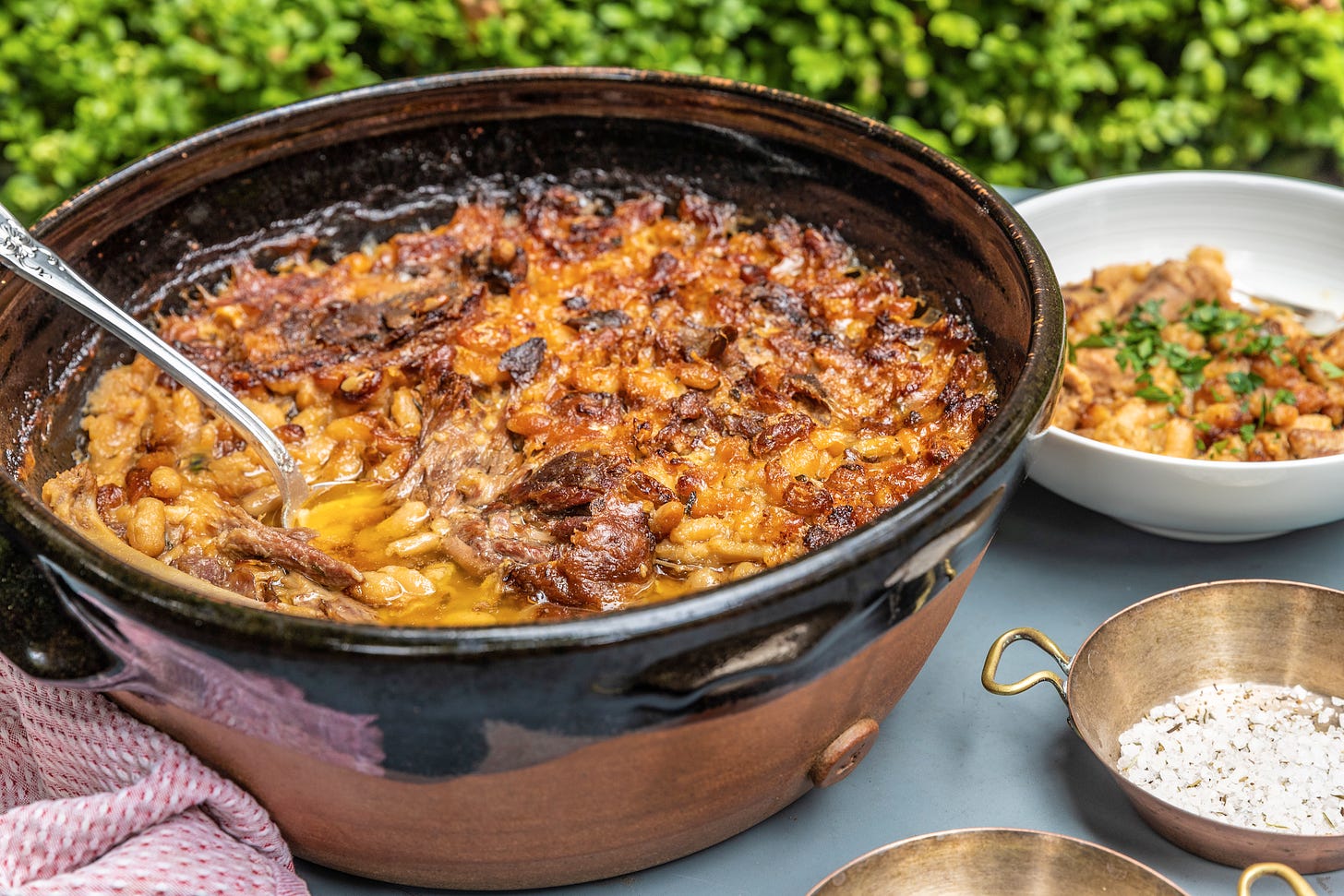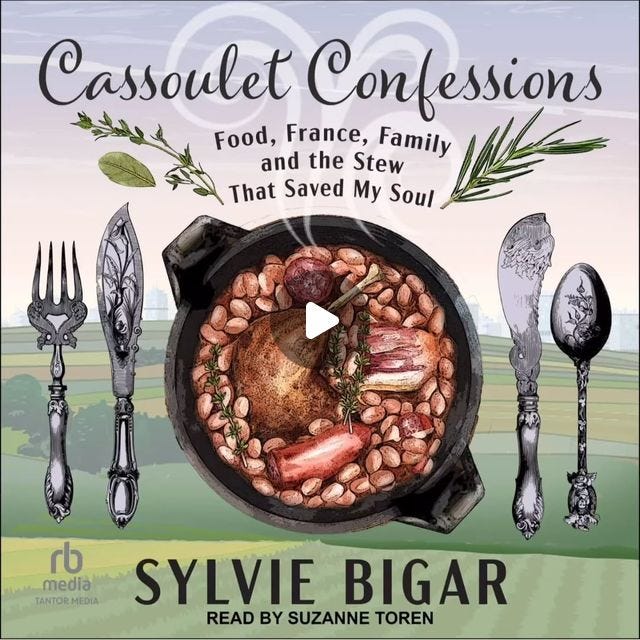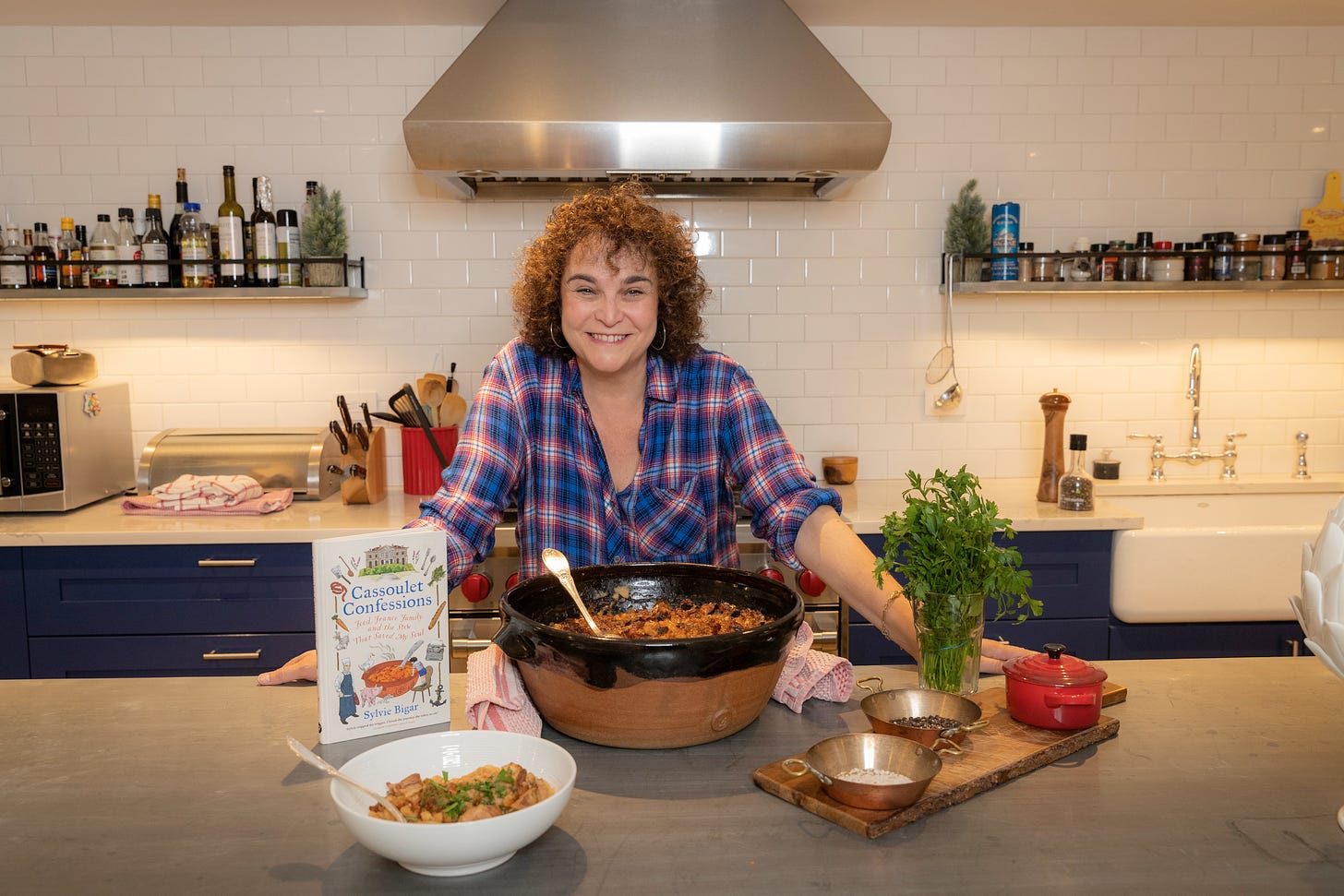Why not make cassoulet today?
"Cassoulet Confessions" explores life through the lens of this historic French stew, and builds a strong case for putting a clay pot on your stove.
I think most of you know I am an avid reader; I just finished The Vulnerables by Sigred Nunez and Wellness by Nathan Hill, both of which I LOVED. Maybe it’s because I like to write, maybe it’s because I love the beauty of words in the hands of people who can build entire worlds from sentences, but there’s not really a time when I don’t have a book open on my bedside table, or a stack waiting for me at the library.
The problem is that when I get a book sent to me that doesn’t have a due date attached to it, it can take me a while to read it. Which is why Cassoulet Confessions has been on my shelf for a while. It’s one I’ve wanted to read, because it’s by Sylvie Bigar, an award-winning food and travel writer and a friend. Well, I finally had a chance to pick it up, and I am happy to report it’s a good one.
Cassoulet Confessions is set in the stunning Occitanie region of Southern France, the birthplace of this historic meat and bean stew. An assignment to explore the origins of cassoulet, ends up being a quest for identity.
I’ll say this: if you tend to like food memoirs, think Ruth Reichl, Tony Bourdain, Bill Buford, then pick this up. It’s a slim volume that won’t take long, and if you prefer, the audio version has just been released, and I think you’ll love it.
What’s more, perhaps you may be inspired to make your very own cassoulet, I know I am. Given how cold and gray it has been, and you know there is this big football game coming up, I thought, hey, why not skip the chili this year and do something a little different. If you’re up for it, I’ve included Sylvie’s “Gateway Cassoulet” recipe below, just after our Q&A. Have a look and let me know if you try it!
Andrea: Sylvie, how did you turn an assignment about the origins of cassoulet into a memoir?
Sylvie: It took a long time. Most publishers were like, a book about cassoulet? That’s too niche. I remember it was taking so long to get an agent and a publisher and I was worried, and people used to make fun of me. They said, ‘Don’t worry no one else is going to steal this idea!’ They thought I was nuts. Even editors would say it's a great long form article, it's not a book.
What they didn't realize is that it’s not about cassoulet, it’s about a French bean and meat stew that became a metaphor for life, and the obsession that I found myself having with this dish. It was a thread that I had to follow to face the story of my family, back to my childhood in Geneva and the story of my mother who is a Holocaust survivor. And that’s why it’s called Cassoulet Confessions, because a lot of secrets and stories are revealed alongside my culinary obsession with cassoulet.
What is cassoulet’s origin story?
There is a lot of legend, there are a lot of tales, and there are so many stories and recipes, but there is one master legend. That tells the story of Castelnaudary, a town on the Canal du Midi between Toulouse and the Mediterranean. During the Middle Ages and the religious wars, it was surrounded by the English, and the people of the town were starving. There was nothing left to eat in the cupboards. So the head of the town told everyone to bring whatever they had left to the town square. And they put it all in a big pot and cooked it. It was mostly beans, leftover vegetables, and some scraps of meat. And that was the first cassoulet. Legend says that the French soldiers were so strengthened by this dish that they were able to push the English army all the way back to the Canal.
Tell me about the pot, that’s quite important to the stew, right?
Yes, the word cassoulet comes from “cassolle,” which is the name of the clay pot traditionally used for the stew. You can make a fine one in a Dutch Oven, but there is something to say about cooking with clay, so if you can, get a true cassolle.
Through Paula Wolfert I found this amazing third generation clay artisan called Studio Clay Coyote in Minnesota. I reached out to them and chatted with the owner, Morgan Baum. I told her I wrote this book about cassoulet, and we spoke about the shapes of cassolles. I mentioned that I prefer a bowl shaped pot because when you use a conical one, the stew dries out more easily because the stock goes to the bottom. When you have more of a bowl shape it’s much more evenly distributed. She actually created my ideal pot for me, so if you’re looking for a nice pot, go to her Studio Clay Coyote and find it here.
What do you need if you want to make cassoulet?
First, let me say it is a project, but it doesn’t have to be. You can dedicate an entire week to this dish, or you can do it in a couple of hours; you can order a whole pig for this or you can buy the duck confit already made.
For my basic recipe, what I call “The Gateway,” you will need lots of garlic, some fresh beans (make sure you haven't had them in your cupboard for more than a year), duck fat, pork belly, duck confit (it’s easy to find, you don’t have to make it yourself), sausage (not a fennel sausage like the Italian kind, something simple and plain, preferably from Toulouse). The trick is that you make a paste of this garlic, onion herb mixture to use as the flavor base.
You can also just pick up a cassoulet kit from D’Artagnan, which has everything you need to make it. (Arianne is the best!)
Cassoulet creates a crust, which is very important to the dish, right?
Yes, when you cook the stew in the clay pot, there is this magical process that creates a crust over the top. And I have used that image in the book. That my mission in life was to peek under the crust, to find out more about myself and my family.
How does it happen, there is no cheese or breadcrumbs?
It’s this sort of chemical reaction that happens where the pig skin and beans come together and creates this crust over the top of the cassoulet. People in France spend a lot of time talking about their crusts, it’s a point of pride.
What do you serve with Cassoulet? It’s pretty hearty, so what’s best?
I serve it with a green salad in another clay pot so it looks so nice on the table. For the salad, I take a raw garlic clove and rub it on the inside of the pot and then I dress the salad with a simple red wine vinaigrette. That salad with the nice vinaigrette really cuts the fat. And you need wine from the region, like a Languedoc if you can find it, and a nice baguette to dip inside it. After that it’s sorbet or maybe a thin apple tart for dessert.
Sylvie Bigar’s “Gateway Cassoulet”
Serves 2
Prep time 40 minutes, cooking time 2 ½ hours






